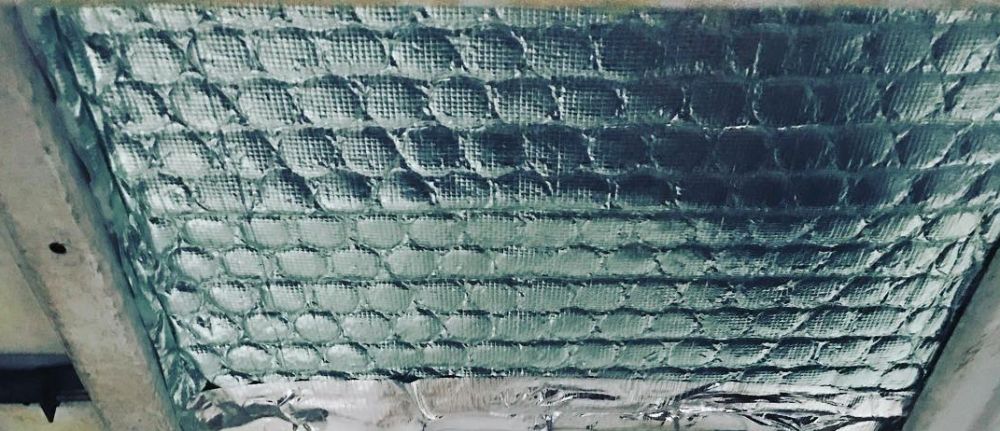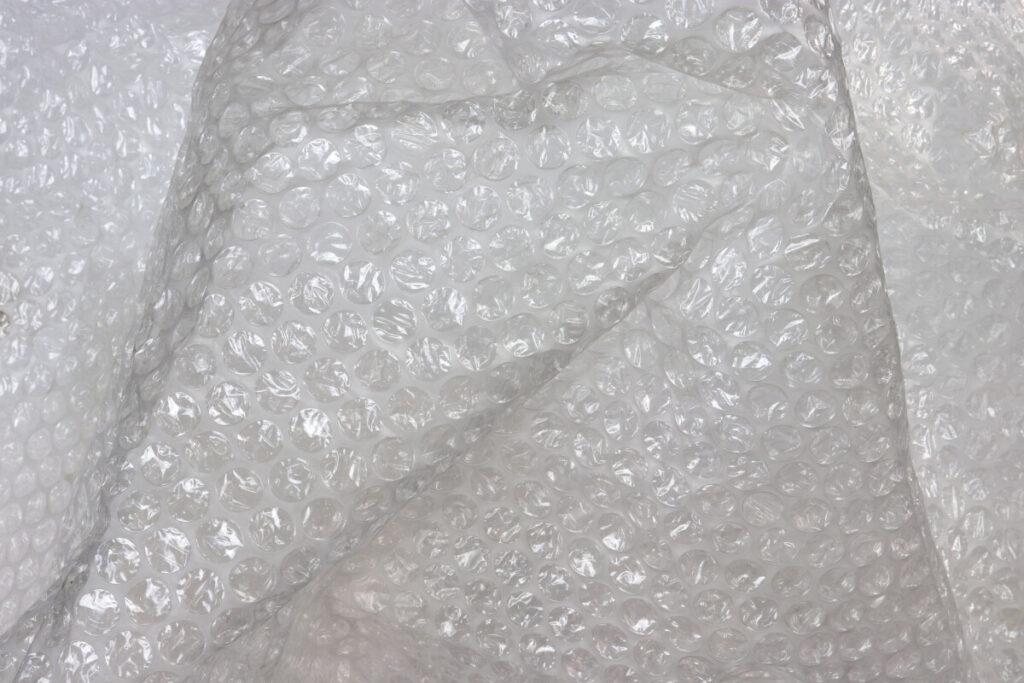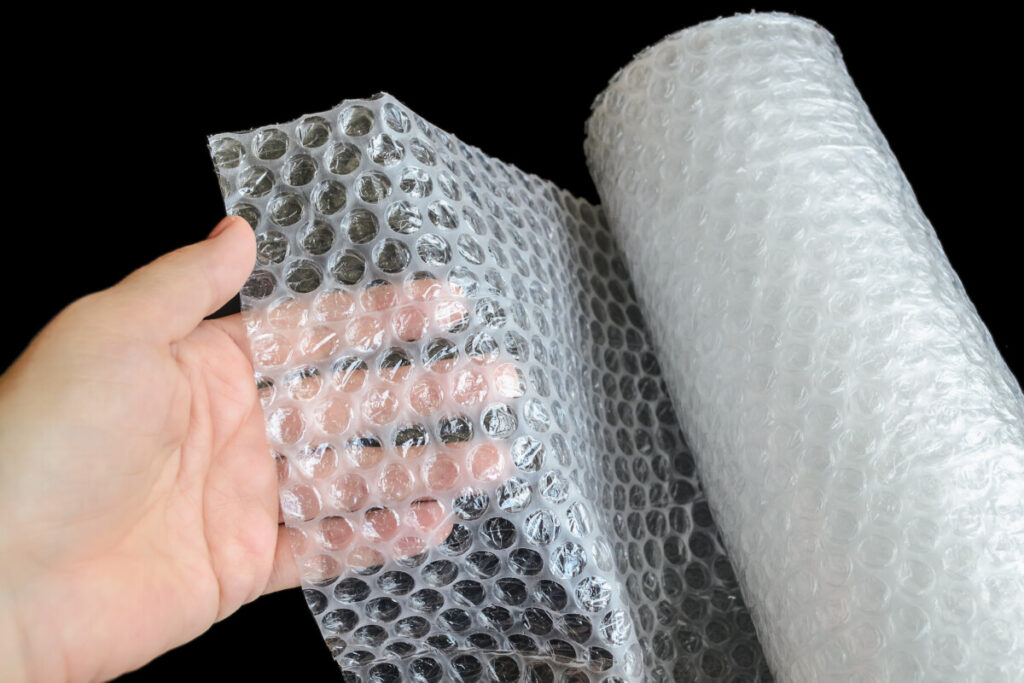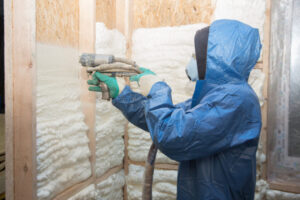There are tons of insulation options available, but how many of them do you have laying around the house? What if something as simple as bubble wrap could be used as an insulator?
Bubble wrap is a good insulator because it is made up entirely of air and plastic which are both excellent insulators. The smaller and closer the bubbles on the bubble wrap are, the better the insulation will be. Multiple layers provides further insulation and bubble wrap is cheaper and easier to use than most other insulators.
When insulating your home—or anything else for that matter—factors such as convenience and cost-effectiveness are very important. Keep reading to learn how to use bubble wrap as insulation.
Bubble Wrap: What Makes It a Good Insulator?
The most common use for bubble wrap, occasionally referred to as cushion wrap, is as a packing material. The air trapped in bubble wrap absorbs any bumps or blows the product endures while in the mail or at the warehouse. This ensures that the fragile item arrives at its destination safely.
However, bubble wrap is also used in insulation for housing and roofing. Usually it contains reflective aluminum/copper on either side which helps to also reflect heat radiation. I used this in the roof and walls of my campervan when I was insulating it – as seen below:

The aluminum is a good insulator of heat radiation and the plastic bubble wrap stops heat transfer through convection and conduction.
You can purchase bubble wrap with bubbles of varying sizes. Some sheets of bubble wrap feature bubbles that are much larger than others, while others have very small bubbles. Bigger bubbles absorb more impact and are therefore better for protecting items.
Is Bubble Wrap A Good Insulator?
We all know that bubble wrap is good at protecting fragile items, but what about insulating? Is bubble wrap a good insulator?
First of all, what even is an insulator? An insulator is something that reduces the heat transfer between two objects. The insulation in your walls prevents the cold air from transferring with the warm air inside your home. The term “insulator” can also refer to something that prevents electricity or sound from passing through it.
Heat transfer is measured by the object's thermal conductivity. The lower the thermal conductivity rating is, the slower heat transfers through it.
According to Georgia State University, the thermal conductivity of air (at 32ºF or 0ºC) is 0.024 watts per meter-kelvin. Meanwhile, the thermal conductivity of glass is 0.8 watts per meter-kelvin.
Gas (or air) is one of the best insulators available but the downside of it is that warm air currents can transfer heat through the air. Bubble wrap fixes this problem by isolating pockets of air in the bubbles so the air cannot flow from one bubble to the next making heat transfer more difficult.
So it is not necessarily the bubble wrap doing the insulating, but the air trapped inside the bubbles. Regardless, because bubble wrap effectively captures air in small pockets, it is a good insulator.

Another factor contributing to the insulating properties of bubble wrap is the plastic itself. Next to air, plastic is one of the most effective thermal insulators. According to Georgia State University, polyurethane (aka. plastic) has a thermal conductivity of 0.02 watts per meter-kelvin.
Think about it. What are coolers made from? Plastic. Why? Because it traps the cold air inside and keeps the hot air outside, or vice versa.
Bubble wrap or reflectix (bubble wrap with the aluminum foil sheets) is a great way to insulate a cooler so it keeps ice for longer.
Unfortunately, the plastic sheets used to make bubble wrap are fairly thin, meaning that it is easier for heat transfers to take place. Regardless, there are some insulating abilities in that plastic.
How to Insulate With Bubble Wrap
Bubble wrap can be used to insulate a variety of things, namely the windows in your home or a cooler. If you are looking for a way to decrease your heating bill this winter, bubble wrap could be a good solution.
Windows are where most cold air finds its way into your home. This is especially true in older homes. While newer homes have double-paned, insulated windows, older homes have single-paned windows that let air pass through fairly easily. Remember, a single sheet of glass has a very high thermal conductivity rating.
Your room is only as insulated as it's weakest point, and this is usually the windows.
Place a layer of bubble wrap over your windows and watch your heating bills decrease significantly because the room should loose less heat and stay warm for longer.
Insulating with bubble wrap is extremely easy. All you need is bubble wrap and a spray bottle filled with water. That's right, no tape, no glue. In other words, no residue left over!
Simply spray some water on the window and stick the bubble wrap to it. When you're ready to remove the bubble wrap just pull it off and store it until next winter.
If possible, use bubble wrap with smaller air bubbles. Bubble wrap with smaller bubbles provides better insulation because there are more pockets of air and it's these small pockets of air that do the majority of the insulating.
Many prefer to use bubble wrap instead of traditional insulators on their windows because of its translucent properties. Foam is completely opaque and therefore lets no light into the home. What you'd save on heating, you'd spend on using the lights all day long. Meanwhile, bubble wrap lets plenty of light in. While the view is obscured, you can still enjoy natural lighting.
You can also use bubble wrap to keep food hot while traveling. Simply wrap your warm food in bubble wrap and if possible then wrap in a tea towel or place in a cooler to keep it warm.
Not only is bubble wrap easy to use, but it is extremely affordable too. You can purchase a large roll of bubble wrap at your local big box, dollar, or shipping store. Better yet, you could save all the pieces of bubble wrap you receive from online purchases. Collecting and recycling these pieces makes your home warmer and more environmentally friendly.
Bubble wrap can be used to insulate more than just your windows. If you need to transport something cold, but don't have an insulated bag, all you need to do is line a plastic or fabric grocery bag with bubble wrap!
Many people also use bubble wrap to insulate their greenhouses during the winter. This is another area where you can save money! If you normally pay an arm and a leg to keep the plants in your greenhouse happy and healthy throughout the year, bubble wrapping the structure will lower those costs. Watch the following video to see how the YouTuber Grow Paradise bubble wrapped his greenhouse to get ideas for your own!



